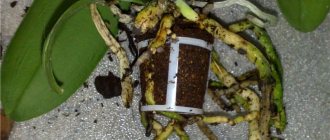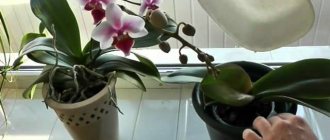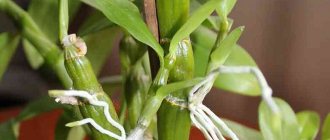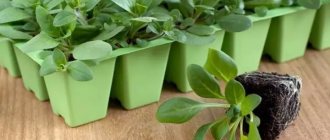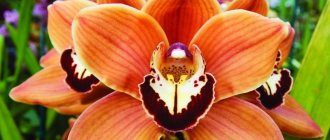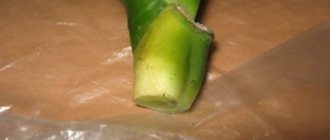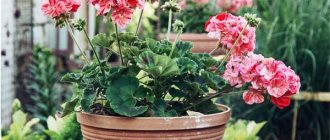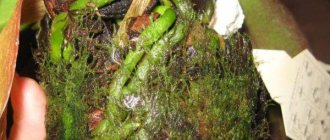How to properly care for an orchid after you bought it in the store and brought it home? It is necessary to create such conditions for the plant so that it survives the move safely and quickly gets used to its new home.
When purchasing an orchid, be prepared for the fact that it can react quite sharply to a change in microclimate: sometimes the plant’s flowers suddenly fade or the buds dry out. There is no need to panic - this is a normal reaction of an orchid to a change of place of residence (adaptation). How can you help a flower “come to its senses” faster?
First steps after purchase
Even if you carefully examined the orchid when purchasing, this does not guarantee that it is free of pests or a disease that has not yet become active. Be sure to quarantine the purchased plant for two weeks. If after this period everything is in order with the orchid, the plant can be safely “introduced” to other inhabitants of the home flower garden.
Very often in a pot you can see bark with a white coating. If you find such elements in a container with a purchased orchid, remove them immediately. Orchids are light-loving plants, but they should not be immediately exposed to direct sunlight. Accustom epiphytes to light gradually and do not forget to shade.
If there are no or insufficient drainage holes in the orchid pot, they can be made using a hot nail without even removing the orchid from the pot. But it is important not to damage the roots of the flower. Holes should be made in places where the root system is not adjacent to the walls of the container.
If the orchid after purchase looks healthy and more or less strong, does not fall out of the pot and does not have damage or dark areas in the lower part, there is no need to rush into replanting.
Pests and diseases
Phalaenopsis can be attacked by pests such as scale insects, spider mites, thrips, and mealybugs. If there are a lot of parasites, the plant begins to wither and shed its leaves.
If pests have been noticed, the first method of combating them is to treat the orchid with a soap solution 2-3 times at intervals of several days.
If this remedy does not help and the pests become more numerous, insecticides should be used: Fitoverm, Actellik, Nurell-D.
Phalaenopsis can get sick with both non-infectious and infectious diseases. The reason is most often due to improper care, namely excessive watering, high humidity and/or low ambient temperature.
Often the plant is affected by various types of rot: black, gray, brown, root, as well as bacterial leaf spot, rust or anthracnose. In such cases, all affected parts of the orchid are removed, and the cut sites are sprinkled with crushed coal.
If the roots are affected, the substrate changes. Then the phalaenopsis is treated twice with a fungicide, for example, Topsin M or Fundazol, with a break of 10 days.
Phalaenopsis at home
Many gardeners advise replanting orchids immediately after purchase. But in the case of phalaenopsis, first you need to study the condition of the plant: are the roots healthy, do the leaves and root collar look good? If everything is fine with the orchid, then it is better not to disturb it again and not to shock it with a transplant at the very beginning of adaptation. It is better to do this when bright green tips appear on the roots. This will mean that the plant has adapted and started growing.
Phalaenopsis, like other orchids, love humidity. But don’t overdo it and create dampness around them. Therefore, you should not spray an orchid brought from the store. But periodically wiping the leaves with a damp cotton pad is very useful.
In order for orchids to take root well in your home, they need to create conditions that are as close to natural as possible. Much attention should be paid to such a factor as air humidity. All orchids need high humidity - from 60% to 80% depending on the species. If you have purchased an orchid that needs to be kept in conditions of high humidity (for example, cattleya), then it can be grown in special greenhouse terrariums: this will make caring for the plant easier.
The first watering should be carried out no earlier than 7-10 days after purchase, since it is impossible to say exactly how long ago the phalaenopsis was watered in the store. Therefore, at home, the substrate should dry well. Do not worry that the orchid will wither without water. Phalaenopsis is much easier to overwater than to dry.
Phalaenopsis should be watered with soft warm water - boiled or distilled. You can water it from a watering can or soak the flower for 5-7 minutes in a container of water.
When watering or soaking, you need to make sure that water does not get into the growing point. If this happens, the liquid should be removed with a piece of rags, cotton wool or a napkin. If this is not done in time, the plant may rot.
Feeding and fertilizers
Since the substrate for phalaenopsis is boiled bark, it needs regular feeding for good growth and flowering. The plant receives nutrients through the roots, so fertilizing should be done with water-soluble fertilizers.
It is recommended to use special fertilizers for orchids or complex fertilizers for decorative flowering indoor plants, for example, Kemira-Lux.
In the second case, the concentration should be 2 times weaker than indicated on the package.
To stimulate leaf growth, fertilizers with a higher proportion of nitrogen are used, and to produce flower stalks, fertilizers with a higher content of potassium and phosphorus are used.
The regularity of feeding phalaenopsis in summer is twice a month, in winter – once a month. During flowering, feeding stops.
It is important to keep the substrate moist before applying fertilizer . Otherwise, you may burn the roots. It is also important to ensure that the fertilizer does not fall on the aerial roots.
Sick orchids should not be fertilized. If there are any problems with the root system, you can carry out foliar feeding - spraying on the leaf.
Paphiopedilum at home
Paphiopedilum, or lady's slipper, is one of the few orchids that can grow well in partial shade. And yet, like any representative of the Orchid family, it is considered a light-loving plant. Therefore, find a place for this orchid on a bright windowsill, protected from direct sunlight (especially if it is a south-facing window).
Orchids can even get sunburned through glass, so when placing them on a windowsill, be sure to shade them. And although flowers need bright light, they can be greatly damaged by direct sunlight. In winter, on the contrary, paphiopedilums (like many other orchids) not only should not be shaded, but it is necessary to artificially create full daylight hours for them: a minimum of 12 hours, a maximum of 15. If the orchids are not illuminated, the leaves of the plants will begin to stretch out, darken and become soft to the touch.
If you bought a flowering plant, start replanting after it has finished blooming. First, remove the flower stalks and move the orchid to a new, wider container. At the same time, it is important to monitor the integrity of the root system: in paphiopedilum it is very easily injured. After transplantation, the orchid should not be watered for 10-12 days.
The frequency of watering paphiopedilum depends on how well the substrate absorbs moisture and how quickly it is consumed by the plant. This is largely influenced by the level of air humidity in the room: the lower it is, the more often the plant needs to be watered. If you have a hybrid slipper orchid, which is considered the most unpretentious plant, then it is enough to water it as the substrate dries. The main thing is not to overdo it with watering and not to dry out the bark in which the orchid grows.
Reproduction of phalaenopsis
Phalaenopsis does not reproduce by seeds or division of rhizomes at home. The only way is reproduction by children that may appear on the peduncle. This can happen due to high room temperature.
If the “baby” does not appear, you can stimulate it by awakening the dormant kidney.
To do this, a semicircular incision is made with a sharp razor on a dormant bud located closer to the base of the peduncle.
Then the cut scale is carefully removed with tweezers. The dormant bud that appears is treated with a growth stimulator, which can be bought at a flower shop.
In a month, at a temperature of 22-29 degrees, the baby will appear. After another 2-3 months, roots will form. When the latter reach 2-3 cm in length, the young specimen is cut off with part of the mother plant and planted in a separate pot filled with sphagnum or a mixture of sphagnum and pieces of bark.
Dendrobium at home
If the dendrobium you purchased is not well established in the pot or the substrate spills out of the container, the plant can be replanted immediately without delaying this procedure. You should take a plastic pot for an orchid, 20x15 cm in size. To make it more convenient to observe the condition of the roots, it is better to choose a transparent container. If there are no drainage holes in it, they need to be made as large as possible so that the roots do not suffocate.
As for the substrate, for dendrobium you should choose pine bark of the middle fraction. A layer of sphagnum moss can be laid on top of it. Don’t forget about drainage, which you can use expanded clay for.
It is best to repot orchids before they enter a new growth phase. The main rule when replanting is to be careful with the roots of the plants. Since orchids are most often transplanted from a smaller container to a larger one, new pots should be taken 1-2 sizes larger. If one of the specimens grows on a block, there is no need to replant it - just tie new sphagnum to the block from time to time. Many gardeners advise replanting orchids immediately after purchase, but in fact the advisability of this procedure depends on the condition of the plant.
For the first time, you need to water the dendrobium 6-7 days after purchase. The same interval should be observed for subsequent watering. In order for the roots to receive enough moisture, the orchid can be soaked together with the pot in a container with regular running water for several minutes. Then you need to let the excess liquid drain and only then return it to its usual place.
It is better to spray dendrobium only on the surface of the soil or around the pot. Leaves and bulbs should not be moistened again - this can lead to the development of rot.
When choosing a place for a dendrobium, you should choose the sunniest window in the house. The plant loves natural diffused light - so the purchased orchid must be shaded. To do this, you can use light fabric (tulle), paper or metallized film. These materials will allow you to achieve soft diffused light.
How to choose phalaenopsis when buying
When choosing a phalaenopsis in a flower shop, it is important to carefully examine the plant, paying attention to:
- Condition of leaves;
- Condition of the roots;
- Condition of the peduncle;
- Orchid age.
A healthy orchid should have dense, elastic and smooth leaves of an intense green color.
You should not buy a plant with wrinkled or limp leaves. There should also be no sticky or white residue on them.
It is important to inspect the outlet for the presence of parasites : thrips, scale insects, centipedes. A sign of damage by them can be all kinds of spots and dots on the leaf plates. Among the shortcomings, the presence of small chips or small scratches on the leaves is allowed.
The center of the orchid should also be clean, without suspicious spots or rot. If a young leaf grows from the rosette, this means that the growth point is not damaged.
Phalaenopsis is mainly sold in transparent pots, which allows you to see the roots. They should be sufficiently developed and have a grayish or greenish color. If aerial roots stick out above the substrate (this is normal), you can touch them.
Healthy ones should be firm and elastic to the touch. You should not buy a plant with brown, dark or rotten roots. You can shake the pot slightly - a healthy phalaenopsis will not dangle or lean to one side.
It is best to buy an orchid that has not only blooming flowers, but also buds.
Due to transportation, the flowers may fall off, but the buds will open and delight the eye for a long time! Opened flowers should be firm and fresh, without any spots or dots.
Another aspect that is worth considering when purchasing is the age of the orchid . A mature specimen has more foliage and is able to bloom and reproduce, while a seedling will form its first flower stalks only after a few years.
In addition to the phalaenopsis itself, you can buy a pot and substrate for replanting it, if necessary. Ceramic and plastic flowerpots that do not transmit light are contraindicated.
The best option would be a transparent plastic pot with many holes in the walls and bottom. Another option is a wicker basket. It is ideal to use boiled bark as a substrate for phalaenopsis, which the plant uses as a support. Peat will not work.
Cymbidium at home
When you bring the cymbidium home, place it on a bright windowsill, but not in direct sunlight. To prevent leaf burns, the plant should be shaded with cloth or paper.
When placing an orchid in an apartment, keep in mind that the cymbidium should not overheat during the day. Therefore, you need to choose a place for the plant where fresh air will circulate well. However, cymbidium must be protected from drafts. In general, all orchids are afraid of cold air - you need to remember this when starting an epiphyte in the house.
You should not place the orchid where there is a sharp change in temperature. In order for the cymbidium to adapt well after moving from the store, it should not experience stress. Although at night the temperature may drop slightly (by a few degrees). This is beneficial for most orchids, as a slight difference will trigger flowering. Well, what gardener doesn’t want to see an orchid in all its glory?
Orchids are tropical plants, so low temperatures (below 12°C) are contraindicated for them. Although among indoor epiphytes there are also orchids from mountainous regions that can live in a relatively cool climate, it is still not worth experimenting with. When choosing the right temperature for an orchid, you must remember that too hot a climate is also not suitable for these plants. The optimal temperature for keeping orchids is considered to be 20-25°C. But slight differences (by a few degrees) in day and night temperatures contribute to the forcing of flower stalks.
Immediately after purchase, cymbidium needs to be watered. After this, the substrate should be moistened regularly - once a week, soaking the flower pot in water for 10 minutes. Before returning the cymbidium to its place of detention, you need to let the excess water drain. There is no need to feed the orchid immediately after purchase.
Errors when leaving
Due to various violations in care, the flower may become sick. Errors must be eliminated taking into account the symptoms that appear in the orchid.
Leaves turn yellow and wither
Yellowness on leaves can be caused by a variety of reasons. The symptom may appear due to insufficient or overwatering. Sometimes the leaves turn yellow due to keeping phalaenopsis on a cold windowsill in winter. Yellowness can be caused by both lack of lighting and burns from being under the scorching sun. In all cases, it is necessary to adjust the conditions of detention, having first identified the cause.
The orchid's unopened buds fall off
The buds of a plant often fall off due to stress; this mainly happens immediately after the flower is bought and brought home. In this way, phalaenopsis reacts to a sudden change in conditions.
An orchid may drop its buds in winter due to lack of light. If there is short daylight outside, the flower needs additional lighting. An orchid is also capable of shedding buds due to exposure to a draft and excessive dry air.
Do not place the flower under an open window in the cold season. To increase humidity, you can use a humidifier or trays with wet expanded clay. Less commonly, the cause of this phenomenon is lack of nutrition. The plant must be fed regularly.
What to do if the orchid's roots are rotting
Phalaenopsis root rotting occurs due to excessive watering. You cannot moisten the substrate if the orchid roots are bright green. Epiphytes quickly react to excess moisture by rotting the root system. If there are suspicions that the roots have become damaged (a putrid smell is detected from the pot, the orchid has become unstable), the plant must be removed from the substrate and inspected.
Rotten areas of the root system are cut back to healthy tissue. The sections are sprinkled with charcoal and lightly dried. After this, the phalaenopsis is transplanted into a fresh substrate and is not watered for the first 4-5 days. In the future, you should be more careful with watering.
The peduncle of an orchid has broken off, what can you do with it?
In some varieties of phalaenopsis, the peduncle can grow up to 70 cm in height or more. Sometimes, if handled carelessly, the flower arrow breaks off. Breaking a peduncle will cause less grief if only its tip has fallen off and buds remain on the plant. In the case when the flowering shoot breaks at the base, there is nothing left to do but wait for the next flowering of the orchid.
If the plant is already configured for this process, it will definitely bloom again soon. In order to help the phalaenopsis expel another flower arrow, you can increase the amount of incoming light by organizing lighting in the evening hours or creating a difference in day and night temperatures for the plant.
On a note! You can speed up flowering by spraying the orchid with a solution of succinic acid or by smearing one of the dormant buds on the peduncle with cytokinin paste. First, the kidney is slightly incised with a thin knife or blade.
Oncidium at home
After purchasing, place the orchid in a bright place, protected from direct sunlight. Oncidium feels best at a temperature of 16-22°C - so try to create appropriate conditions for the plant - this will help it adapt faster.
It is best to use rainwater to water oncidium. After soaking a pot with an orchid in it, you need to ensure that the roots do not remain in the water accumulated at the bottom of the pot for a long time. This can lead to their rotting. It is advisable to drain excess water if watering was carried out using the immersion method.
Orchids should be watered with almost hot water (35-40°C). It is better to do this in the morning. Many types of orchids do not tolerate watering with hard water, because in nature they “drink” when it rains. Therefore, running water is not very suitable for irrigation: the chemicals contained in it can have a detrimental effect on plants. Therefore, it is best to water your orchids with rainwater or filtered water. The frequency of watering depends on the conditions. If the flower's pseudobulbs and leaves begin to wrinkle, the plant does not have enough moisture. If the roots rot and the leaves turn yellow, there is overflow.
Caring for orchids at home can vary slightly depending on what type of flower you choose. But if you strictly follow all the conditions, then the orchid will feel like a full-fledged mistress of your flower garden on the windowsill.
Features of keeping orchids in a store
When purchasing a flower, you need to take its choice seriously so that you do not have to correct the negligence of the sellers. The orchid should have green, blemish-free, elastic leaves, which by their appearance indicate the condition of the roots. In specialized greenhouses, flowers are usually properly looked after, which means:
- maintaining a comfortable level of humidity in the environment;
- rational temperature for orchids in the air space;
- prevention against pests and diseases.
In small trade stalls, sellers are not always able to create conditions that are at least close to ideal.
How to properly care for a plant during and after flowering?
If you grow an orchid at home in compliance with all conditions, it will bloom regularly. Caring for a flower in this case involves several features:
- Watering should be more frequent and abundant, but do not forget to get rid of excess water so that there are no problems with the roots.
- We raise the night temperature by at least five degrees.
- Transplantation at this moment is prohibited, otherwise the flowers and buds will fall off.
- Feeding is acceptable and even desirable, but only to a limited extent.
- Upon completion of flowering, the peduncle is trimmed. At the same time, the conditions of care return to traditional ones.
If the orchid is covered with wrinkled, yellowed leaves and does not release a peduncle, it needs to be moved to another place, or, as a last resort, replanted.


